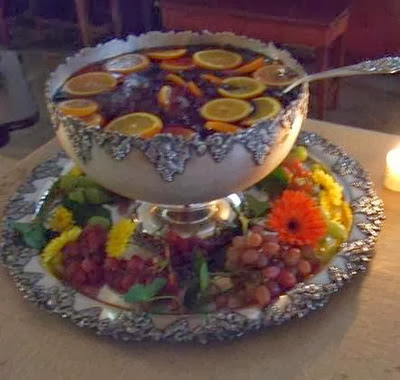As we continue to break all weather records, let us recall winters of the past and remind ourselves this too shall end with the arrival of spring. Saturday was the Winter Solstice, which is the shortest and darkest day of the year. All of our days commencing now will be a little longer until the Summer Solstice arrives and once again our days gradually shorten. There is comfort in the order of our natural world.
The current ice storm is reminiscent of the one in 2000 when many towns were without power for weeks on end. Admittedly it has not seemed quite so cold since the terrible lingering winter storms of 1986 with weeks of ice and snow all of January and into February. This pattern indicates we may expect an ice storm every 13 or 14 years… another sign of predictable order.
Saturday morning the electricity went off and remained off. Housebound by icy roads, we listened to the clocks tick while watching the antics of the Blue Jays, who squabbled with a hungry squirrel at the birdfeeder. As the darkness deepened, we lit candles and reminded ourselves our forefathers braved elements such as these without central heat or electricity… ever.
*Poor Rajah... his crown had ice all over it and was covering his eyes. I opened the window and used a hair dryer on him before the power went off.
The wind arrived on Sunday, ice-brittle branches were whipped and they began to break. The jarring sudden crack and ensuing slow drop of large tree limbs throughout the forest was depressing to hear. Mature trees may have minor flaws at their branch bases and with the ice, this flaw has proven fatal.
I have hugged my ancient Black Walnut on many occasions and it has been substantially damaged. The heirloom English Ivy ‘tree‘, which had been carefully trained to frame the front door, is now a collapsed mass of broken branches and crushed leaves. We have said goodbye to the Apricot who gave us 20 years of her delicious fruit. Things will be quite different in many gardens this coming year.
However since gardeners are the eternal optimists, we must wipe our tears, embrace the present, clean up the spoils of war left by Old Man Winter, and look to the positive. Perhaps the trees had grown to shade flower beds and the elements have ’trimmed’ them. The trees that were ill perhaps needed to be removed as a safety precaution. And many lawns will have sunlight they have perhaps been lacking for decades. There is always a positive to every disaster… and we have the promise of spring.
Merry Christmas, have faith, and stay warm!










 Foul leftovers.
Foul leftovers. 



